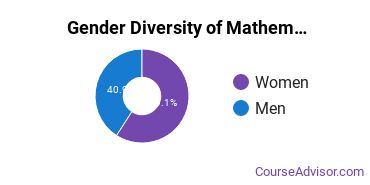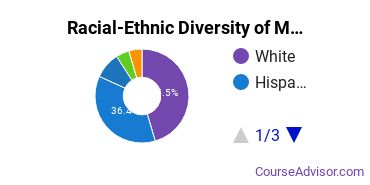Mathematics at William Paterson University of New Jersey
If you plan to study mathematics, take a look at what William Paterson University of New Jersey has to offer and decide if the program is a good match for you. Get started with the following essential facts.William Paterson University is located in Wayne, New Jersey and approximately 9,635 students attend the school each year.
Want to know more about the career opportunities in this field? Check out the Careers in Mathematics section at the bottom of this page.
Featured William Paterson University of New Jersey Programs
Learn about start dates, transferring credits, availability of financial aid, and more by contacting the universities below.
If you have a knack for mathematics and an interest in learning more, study online to achieve your career goals at Southern New Hampshire University. Our mathematics degree can help you enhance your mathematical abilities, including reasoning and problem-solving in three areas: analysis, algebra and statistics.
BA in Mathematics - Applied Mathematics
Put mathematical concepts to work to solve today's most complex real-world problems by studying applied mathematics with this specialized online bachelor's from Southern New Hampshire University.
William Paterson University Mathematics Degrees Available
- Bachelor’s Degree in Math
Featured William Paterson University of New Jersey Programs
Learn about start dates, transferring credits, availability of financial aid, and more by contacting the universities below.
If you have a knack for mathematics and an interest in learning more, study online to achieve your career goals at Southern New Hampshire University. Our mathematics degree can help you enhance your mathematical abilities, including reasoning and problem-solving in three areas: analysis, algebra and statistics.
BA in Mathematics - Applied Mathematics
Put mathematical concepts to work to solve today's most complex real-world problems by studying applied mathematics with this specialized online bachelor's from Southern New Hampshire University.
William Paterson University Mathematics Rankings
The math major at William Paterson University is not ranked on College Factual’s Best Colleges and Universities for Mathematics. This could be for a number of reasons, such as not having enough data on the major or school to make an accurate assessment of its quality.
Math Student Demographics at William Paterson University
Take a look at the following statistics related to the make-up of the math majors at William Paterson University of New Jersey.
William Paterson University Mathematics Bachelor’s Program

Prospective students may be interested in knowing that this school graduates 15% more racial-ethnic minorities in its math bachelor's program than the national average.*
The following table and chart show the race/ethnicity for students who recently graduated from William Paterson University of New Jersey with a bachelor's in math.

| Race/Ethnicity | Number of Students |
|---|---|
| Asian | 2 |
| Black or African American | 1 |
| Hispanic or Latino | 2 |
| White | 5 |
| International Students | 0 |
| Other Races/Ethnicities | 0 |
Concentrations Within Mathematics
The following math concentations are available at William Paterson University of New Jersey. The completion numbers here include all graduates who receive any type of degree in this field from William Paterson University of New Jersey. Some of these focus areas may not be available for your degree level.
| Concentration | Annual Degrees Awarded |
|---|---|
| General Mathematics | 22 |
Related Majors
Careers That Math Grads May Go Into
A degree in math can lead to the following careers. Since job numbers and average salaries can vary by geographic location, we have only included the numbers for NJ, the home state for William Paterson University of New Jersey.
| Occupation | Jobs in NJ | Average Salary in NJ |
|---|---|---|
| High School Teachers | 29,140 | $76,390 |
| Mathematical Science Professors | 1,690 | $96,400 |
| Statisticians | 1,230 | $116,090 |
| Mathematicians | 270 | $117,060 |
References
*The racial-ethnic minorities count is calculated by taking the total number of students and subtracting white students, international students, and students whose race/ethnicity was unknown. This number is then divided by the total number of students at the school to obtain the racial-ethnic minorities percentage.
- College Factual
- National Center for Education Statistics
- O*NET Online
- Image Credit: By No machine-readable author provided. NHRHS2010 assumed (based on copyright claims). under License
More about our data sources and methodologies.

